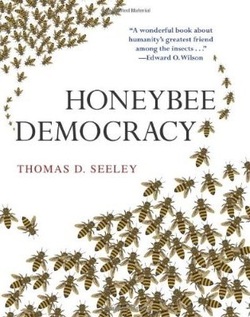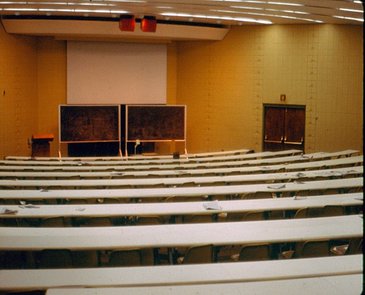Once, a lifetime ago, I started the study of general biology and agriculture. Although it had a good deal of interest for me, there was no real personal direction to it at the time, just the predetermined, one size fits all, study plan laid out by an adviser. Thus, in my first year of school, I found myself enrolled in an introductory animal science course. This is the type of class that covers the gamut of animal life from microscopic critters to whale sized ones, full of memorization of fact and theory. The class was huge, well over 100 students, all neatly seated behind row after row of long curving tables arranged like a tiered academic coliseum. The lecture hall was newly built and had that modern, clean, somewhat impersonal, feel to it. The crowd of students murmured loudly as we waited for class to start. Far down in front on the "stage", two rolling blackboards were lined up, one with ‘AN SCI 101’ written in large bold letters across it. Soon a small figure walked out to the podium setup in front of the blackboards. Looking up at the crowd, the figure began speaking in a cutting voice announcing the beginning of class. The voice was not particularly loud, but it was very distinct and immediately silenced the crowd of students. Such was my introduction to Professor Madam Frances Lechleitner. In appearance she was a small, aging figure, and, at that time, she was surely close to retirement. But her energy was never lacking. To my newbie undergraduate eyes her attitude was outwardly crusty, no nonsense and to the point. It was both intimidating and inspiring, evoking a sense of respect and admiration. I have vivid memories of her stoically smoking a cigarette behind the hall after lectures, obviously concentrating on some current problem. Being a world authority on termites she was well respected and accomplished in the field, yet here she was teaching an introductory freshman class that others would have shunned. Whatever her reasons, when she spoke, you listened. So, when we were halfway through the semester, and she matter-of-factually stated "Whatever your field of study is, whether social scientist, biologist, or engineer, you need to take a class in entomology. Insects are everywhere in the world and you need to understand them", I listened! I immediately resolved to add an entomology course to my pre-set list of classes. I didn’t realize it at the time, but my ambling course through biological disciplines had just ended and had now taken on a distinct direction, one that has influenced my path ever since. Through the years I have found entomology to be fascinating, encompassing any imaginable possibility of form and function. The array of diversity is stunning. And while my personal path has taken me elsewhere, I am occasionally reminded of the wide-eyed enthusiasm and wonderment that drove me then.

Thomas Seeley is such a reminder. He is a bee behavior researcher and has an amazingly creative ability when it comes to experiments with bees. And experiment he has. A lot! Starting in graduate school about the time I was just beginning with Dr. Lechleitner, he has since studied the hows, whys and whats of bee foraging and bee swarming. What is more, he has done something few researchers have. He has collected all the research, papers and findings together into two books. Even better, he has written them in a semi-technical manner making them readable to anyone with a general knowledge of biology. His first book on foraging activities and behavior (The Wisdom of the Hive: The Social Physiology of Honey Bee Colonies) is, unfortunately, very expensive and probably best obtained through a library. His second and most recent, however, is on bee swarming behavior and is much more reasonably priced. This book, Honeybee Democracy , follows his interest in answering questions regarding how and why bees swarm from an established colony and, most importantly, how they decide on a new home site. When a set of bees and queen swarm from a hive, they innately know what they are looking for in a new home. One of Seeley’s quests was to figure out what those home selection criteria are. Through a series of creatively setup choice tests, he determined, among other things, that the volume of a hive site should be at least 40 liters. They may take up in a smaller space and they can certainly fill a larger one, but if given a choice, they will opt for the 40 liter size. So the question arises: how big are beekeeping hives? One deep section in a typical Langstroth hive (the box type hives everyone is familiar with) is about 47 liters and, since Langstroth hives have multiple sections, they can easily meet this requirement. What about the top bar design? Measuring out the elongated trapezoidal shape of my hives, I was unsure they would make the cut. On final computations, however, I came up with about 57 liters. So, it looks like the size should be 'comfortable' for them. Not really a pressing problem at the moment, but a curiosity, none the less. After all these years, you see, I am still thinking about entomology...

 RSS Feed
RSS Feed